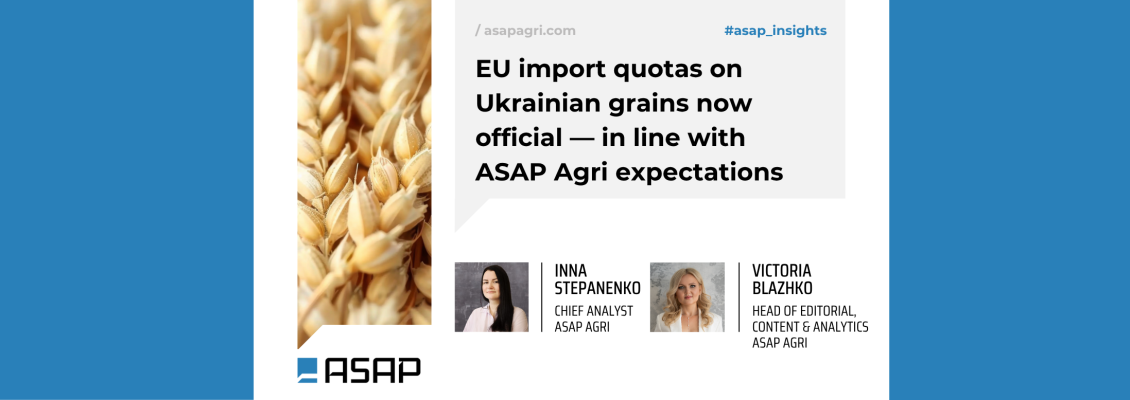
Європейський Союз офіційно відновив квоти на імпорт української
сільськогосподарської продукції, які набувають чинності з 6 червня 2025 року.
Як зазначила Вікторія Блажко, керівниця редакційного контенту та аналітики ASAP Agri, під час конференції Grain Ukraine минулого
тижня, квота на пшеницю встановлена на рівні 583 тис. тонн до кінця року, що
відповідає 7/12 стандартного річного обсягу у 1 млн тонн через початок її дії з
середини року. Імпорт понад встановлену квоту обкладатиметься митом у 95 EUR/т.
За словами Блажко, це рішення особливо важливе для України, яка у 2024
році експортувала до ЄС 6,3 млн тонн пшениці — дві третини від загального
обсягу імпорту пшениці до ЄС. У поточному сезоні 2024/25 (липень–червень)
Україна залишається головним постачальником, вже відвантаживши 4,4 млн тонн, що
забезпечило їй 62% ринку. З огляду на нові квоти Україні, ймовірно, доведеться
перенаправити до 3 млн тонн пшениці на альтернативні ринки. Хоча глобальний
попит може частково поглинути ці обсяги, а можливе зменшення врожаю обмежить
пропозицію, у короткостроковій перспективі очікується тиск на ціни української
пшениці.
Квота на кукурудзу встановлена на рівні 379 тис. тонн до кінця 2025
року, що становить 7/12 довоєнного річного обсягу в 650 тис. тонн. Водночас
через високу залежність ЄС від імпорту кукурудзи — особливо українського
походження — нульове мито залишатиметься чинним навіть для обсягів понад квоту,
незважаючи на офіційне мито у 94 EUR/т. У сезоні 2023/24 українська
кукурудза становила 70% загального імпорту кукурудзи до ЄС, а у 2024/25
(липень–червень) — 57% (або 10,3 млн тонн).
Щодо ячменю, квота на 2025 рік складає 204 тис. тонн, що відповідає 7/12
річного обсягу у 350 тис. тонн. Імпорт понад цей обсяг обкладатиметься митом у 93 EUR/т. За словами Блажко, експорт українського ячменю до ЄС вже
скоротився до 409 тис. тонн у поточному сезоні проти 964 тис. тонн у 2023/24. З
огляду на те, що близько 200 тис. тонн ще можуть бути поставлені в межах квоти
до кінця року, вплив очікується помірним і вимагатиме лише обмеженого
перенаправлення експорту на інші ринки.




Прокоментувати